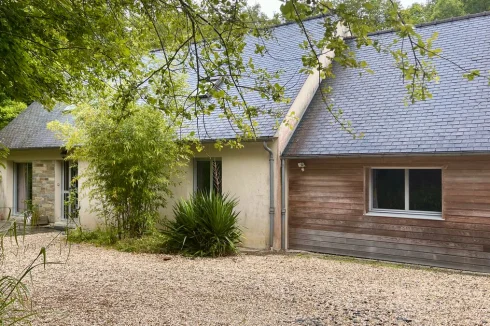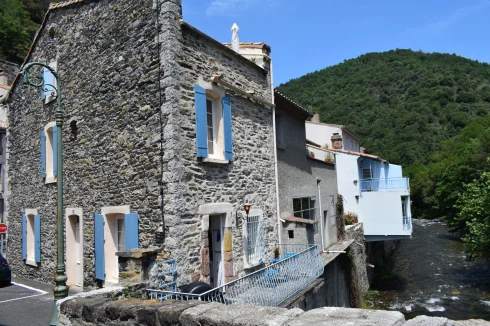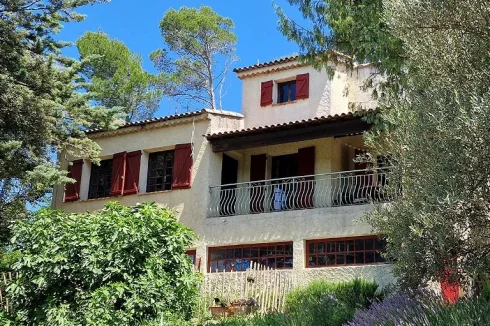Lies, Damned Lies and French House Prices
Tuesday 04 November 2014
A difficult housing market is placing real challenges on the notaires and estate agents to provide useful information on the movement in house prices.
Over the past few years the voluminous quarterly housing market reviews from the Notaires de France and the national association of French estate agents (FNAIM), have been the staple diet of our property news pages.
The reviews have not been without their limitations, primarily because of the bias towards the main urban centres, where most of the sales take place and where comparisons can be more easily undertaken.
Nevertheless, there has always been enough meat on the bone to at least give a flavour of what is happening in rural areas.
Until recently that is, for over the past year or so the information provided in the reviews has been in sharp decline.
Where once FNAIM provided a lights, bells and whistles 20+ page quarterly report, with detailed figures by town, department, region and type of property, this has now been reduced to a bi-annual single page review, containing only the most general analysis of the movement in house prices on a national basis.
In their latest review for the first half of the year FNAIM state that the price of older houses had fallen by an average of 1.4% in the year to June, but exclaimed that, "the housing market has lost its bearings, it is disorientated", and that the market for older existing homes had "no dynamism or conviction."
Such a comment may well apply to the organisation itself, for to distil a half year review of the heterogeneous French housing market to a handful of statistics may well be of interest to economists, but is of very little value to either buyers or sellers of property.
Despite the tacit withdrawal of FNAIM as serious market analysts the notaires have continued on valiantly with their own quarterly reports. What these reports have lacked in currency, due to the time gap between collection, analysis and publication, they have made up for in greater reliability.
More reliable perhaps, but even the Notaires de France appear to have concluded that their own figures are not entirely representative of the state of the market.
The headline figure is of course present, with the notaires reporting recently that for the second quarter of the year the price of older homes in the regions actually grew by 0.4%, giving a fall of 0.8% in the year ending 30th June 2014.
Drill down into the report and even this modest analysis starts to fall apart, for they acknowledge that due to the strong local differences that exist, "this can sometimes cause a discrepancy between the statistical results and local sentiment, as the less active markets are weakly represented in the aggregated results."
In short, the notaires can only report on the prices of those properties that are selling, not those that are on the market but cannot find a buyer.
Of course, it has ever been thus, but whereas in the past the level of sales was such that most bases could be covered, it is now a generally slower market and a far more mixed picture, with only the more desirable properties finding a buyer. Buyers have become more knowledgeable, and more discriminating.
This is particularly important for rural properties, where all the evidence suggests that the reduction in the number of sales has been greatest, and where the diversity in the nature of the housing stock makes it far more difficult to assess the movement in prices.
Moreover, national average figures cannot take account of structural changes that occur within a market. If there is a change in the type of properties being purchased, this will inevitably impact on the overall average value, even though there may actually be no change in the value of any of the properties in the market.
Thus, elementary maths dictates that an increase in the volume of sales of higher prices properties over a period will increase the overall average price movement; conversely, a reduction in the sale of such properties will pull the aggregated average price south.
In a separate exercise to their quarterly housing market report, the notaires continue to provide information on the movement of house prices by size of property for apartments and for older houses.
However, they are only annualised figures, based on sales contracts signed at least six months previously. So they do not provide information on the movement in the quarter, and the figures are of only historical interest.
As they are also based on transactions within the main urban centres of each department, weighed to the lower end of the market, they are of little use as an indicator of what is happening to country properties.
Nevertheless, these figures continue to remain the best we have to go on, and, particularly for those of you who are new to the market, they do at least provide a comparative snapshot of prices across the country.
The following table then, shows the average price for older houses in each department of France, together with the annualised movement in price up to the end of June 2014.
At the end of the table you will find a quick review of the regional picture over the past three years.
| Alsace | ||
| Bas-Rhin | €204,800 | 0.0% |
| Haut-Rhin | €190,000 | -1.5% |
| Aquitaine | ||
| Dordogne | €118,800 | -1.1% |
| Gironde | €212,000 | +1.7% |
| Landes | €175,000 | +1.1% |
| Lot-et-Garonne | €127,300 | -1.2% |
| Pyrénées-Atlantiques | €211,200 | +1.2% |
| Auvergne | ||
| Allier | €92,000 | +2.5% |
| Cantal | €109,800 | +2.6% |
| Haute-Loire | €116,800 | +2.6% |
| Puy-de-Dôme | €155,000 | +2.2% |
| Brittany | ||
| Côte d'Amour | €126,100 | 0.0% |
| Finistère | €135,300 | -0.5% |
| IIle-et-Vilaine | €180,000 | +0.2% |
| Morbihan | €165,000 | -2.0% |
| Burgundy | ||
| Côte-d'Or | €163,900 | +2.9% |
| Nièvre | €80,000 | +0.3% |
| Saône-et-Loire | €120,000 | +3.4% |
| Yonne | €118,000 | +3.8% |
| Centre | ||
| Cher | €100,000 | -3.6% |
| Eure-et-Loir | €155,000 | -1.4% |
| Indre | €94,000 | -1.3% |
| Indre-et-Loire | €175,000 | -4.5 % |
| Loir-et-Cher | €122,400 | -1.2% |
| Loiret | €158,500 | -2.7% |
| Champagne-Ardenne | ||
| Ardennes | €110,200 | -2.5% |
| Aube | €129,000 | -4.5% |
| Haute-Marne | €88,000 | -2.5% |
| Marne | €167,800 | -1.1% |
| Franche-Comté | ||
| Doubs | €168,100 | -0.7% |
| Haute-Saône | €107,000 | -0.6% |
| Jura | €127,000 | -0.6% |
| Belfort | €149,900 | -0.6% |
| Languedoc-Roussillon | ||
| Aude | €133,800 | -4.0% |
| Gard | €194,000 | -3.4% |
| Hérault | €212,000 | -2.7% |
| Lozère | €110,000 | -3.1% |
| Pyrénées-Orientales | €170,000 | -2.8% |
| Limousin | ||
| Corrèze | €110,000 | +3.0 % |
| Creuse | €70,000 | +8.7% |
| Haute-Vienne | €118,000 | +3.0% |
| Lorraine | ||
| Meurthe-et-Moselle | €150,000 | -0.9% |
| Meuse | €100,000 | -4.8% |
| Moselle | €155,000 | -1.7% |
| Vosges | €115,100 | -3.8% |
| Lower-Normandy | ||
| Calvados | €165,000 | +0.6% |
| Manche | €125,900 | -1.5% |
| Orne | €100,000 | -3.1% |
| Midi-Pyrénées | ||
| Ariège | €102,000 | +1.4% |
| Aveyron | €115,000 | -1.4% |
| Gers | €140,300 | -1.4% |
| Haute-Garonne | €230,000 | -2.3% |
| Hautes-Pyrénées | €140,000 | +1.6% |
| Lot | €122,000 | -1.4% |
| Tarn | €138,000 | -1.1% |
| Tarn-et-Garonne | €142,200 | -1.9% |
| Nord-Pas-de-Calais | ||
| Nord | €150,000 | -1.5% |
| Pas-de-Calais | €133,000 | -0.9% |
| Pays-de-la-Loire | ||
| Loire-Atlantique | €195,000 | -1.5% |
| Maine-et-Loire | €147,500 | -0.1% |
| Mayenne | €105,000 | -0.2% |
| Sarthe | €125,000 | +0.6% |
| Vendée | €142,000 | -0.2% |
| Picardy | ||
| Aisne | €110,000 | -1.8% |
| Oise | €184,000 | -1.8% |
| Somme | €125,000 | +3.2% |
| Poitou-Charentes | ||
| Charente | €107,500 | -0.3% |
| Charente-Maritime | €175,000 | -2.7% |
| Deux-Sèvres | €110,000 | -2.9% |
| Vienne | €125,000 | -1.8% |
| Provence-Alpes-Côte d'Azur | ||
| Alpes-de-Haute-Provence | €170,000 | -3.1% |
| Alpes-Maritimes | €417,500 | -4.4% |
| Bouches-du-Rhône | €282,000 | -1.8% |
| Hautes-Alpes | €192,300 | -3.1% |
| Var | €310,000 | -4.1% |
| Vaucluse | €213,000 | -1.7% |
| Rhône-Alpes | ||
| Ain | €184,500 | -0.2% |
| Ardèche | €150,000 | +2.5% |
| Drôme | €185,400 | +2.0% |
| Haute-Savoie | €341,800 | +2.5% |
| Isère | €206,700 | +1.5% |
| Loire | €157,500 | +2.2% |
| Rhône | €270,000 | +1.6% |
| Savoie | €209,900 | +4.5% |
| Upper-Normandy | ||
| Eure | €150,000 | +0.1% |
| Seine-Maritime | €153,000 | -1.7% |
Source: Notaires de France
Price Trends
The figures from the notaires show that at a regional level prices have fallen for three consecutive years to June 2014 in most areas of France, although in all cases the cumulative regional fall has been under 10%.
Even in those regions which have experienced at least one year of price growth in this period - Alsace, Aquitaine, Auvergne, Burgundy, Limousin, and Rhône-Alpes - the overall trend has been downwards.
In Upper Normandy, Champagne-Ardenne, Franche-Comté, Languedoc-Roussillon and Nord-Pas-de-Calais prices have fallen in all departments of these regions for the past three years.
Other headline figures include the department of Dordogne, where prices have fallen over the past three years by 9%, a figure that is mirrored in the departments of Aude (-11%) and the Pyrénées-Orientales (-10%) in Languedoc-Roussillon.
Standing out from the crowd is the department of Gironde in Aquitaine, where prices have continued to rise for the past five years, due in large measure to the growing popularity of the city of Bordeaux.
Next Article: Social Charges on Non-Residents
Thank you for showing an interest in our News section.
Our News section is no longer being published although our catalogue of articles remains in place.
If you found our News useful, please have a look at France Insider, our subscription based News service with in-depth analysis, or our authoritative Guides to France.
If you require advice and assistance with the purchase of French property and moving to France, then take a look at the France Insider Property Clinic.





